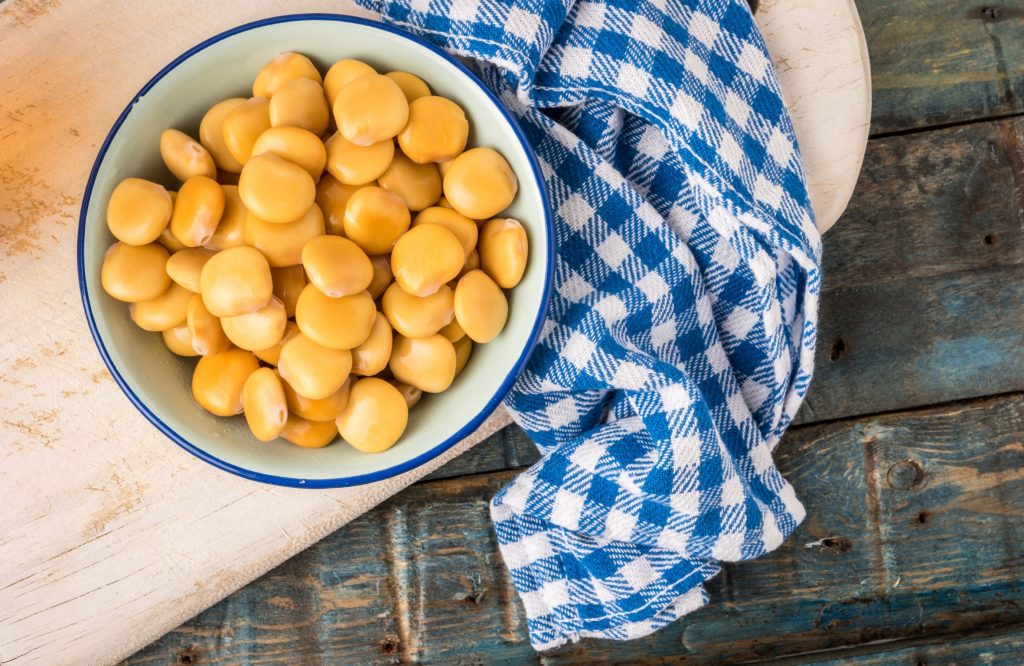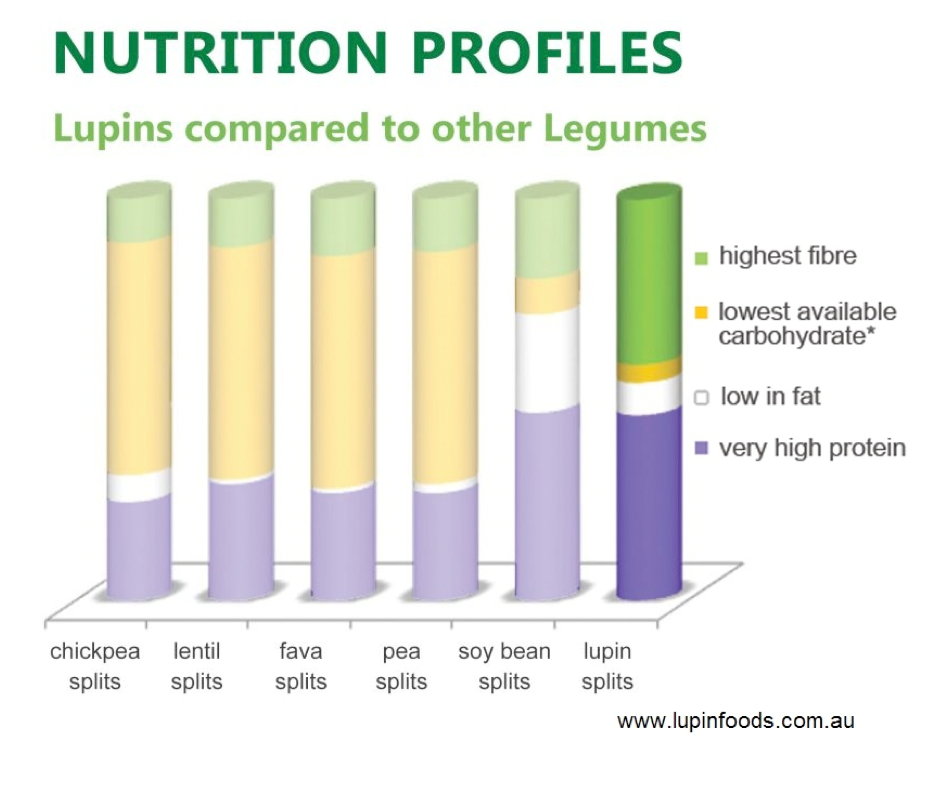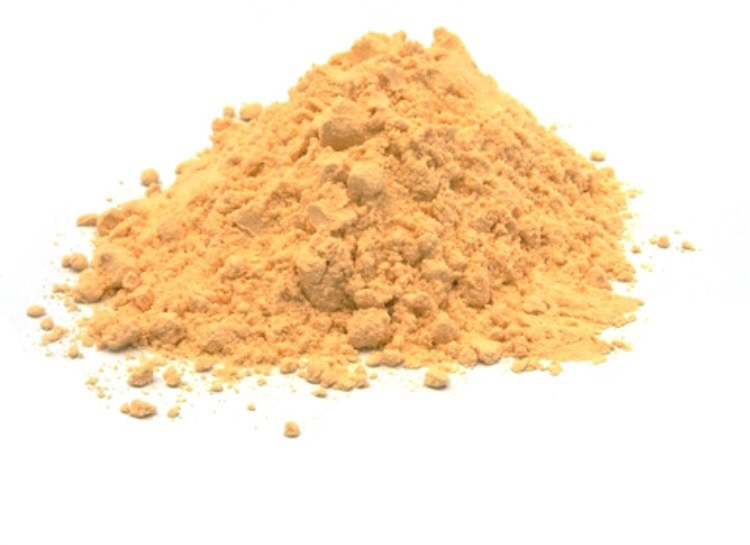Lupins are the new up and coming super food legume to watch!

And guess what? It is grown right here in Australia! However lupins have been around for thousands of years in Europe and North America and have been an important component of the Mediterranean diet (eaten as a whole bean snack or milled into flour for use in baked goods). They also have an interesting history, apparently being used as food in the Roman Empire to sustain soldiers during long marches!
So what’s so good about Lupin?
Let’s start with its super nutritional benefits:
- is low in calories but high in nutrients making lupin very nutrient dense
- is one of the richest sources of plant protein at 43% or 20g in half a cup lupin flour (double that of other legumes)
- provides all the essential amino acids, especially arginine (unlike most other legumes and grains)
- is an incredibly rich source of fibre at 30% (2-3 times higher than other legumes)
- is very low carb 1-4% (compared to 50% carbs for other legumes)

Not convinced? Lupin has…
- a very low glycaemic load and glycaemic index
- is high in plant omega 3 fats
- is rich in minerals, antioxidants and prebiotic polyphenols
- does not contain lectins which can irritate the gut (other legumes contain lectins but are destroyed when cooked)
- does not contain anti-nutritional factors (like phytic acid, trypsin inhibitors, saponins) which can block the absorption of minerals (found in other legumes); that’s why lupin is so nutritious and can be eaten raw!

Does lupin have any health benefits?
Studies on lupin enriched foods (containing at least 20% lupin flour) have shown that they have the potential to:
- Be a natural appetite suppressant which can lead to a reduction in energy intake and a decrease in ghrelin which may assist in weight reduction. (1)
- improve blood glucose regulation by decreasing insulin and glucose spikes. (2)
- Improve blood cholesterol due to the high fibre and phytosterol content
- lower blood pressure (possibly due to the high content of the amino acid arginine)
- Improve the gut microbiome, specifically an increase in the beneficial bacteria “bifidobacteria” thanks to its prebiotic fibres, oligosaccahrides (8%) and polyphenols
(1)
A study conducted by Dr Kouris’ PhD student Sopie Skalkos at La Trobe university showed reduced appetite especially at the evening meal after hospital patients consumed 2 Skinnybik for morning tea and afternoon tea (4 in total).
A study from the University of Western Australia found that people who had lupin eneriched bread for breakfast ate up to 20% less for lunch compared to people who consumed white bread.
(2)
Apart from its very low GI and carb load, lupin has a natural protein called gamma congluttin which appears to sensitise insulin helping in glucose regulation.
The study at La Trobe university showed that 2 Skinnybik lupin bikkies eaten at morning tea and afternoon tea (a total of 4 a day) improved glycaemic control whereas other nutrient matched biscuits that did not contain lupin worsened glycaemic control.


